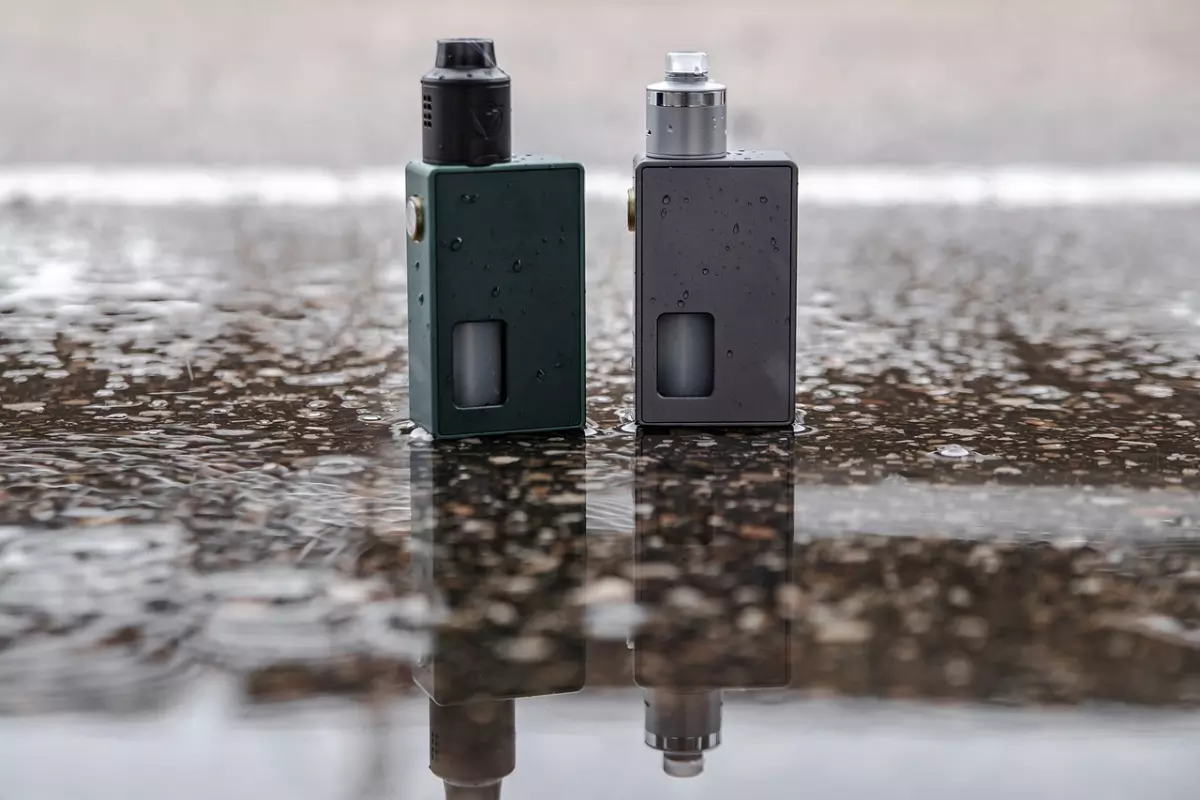If you are considering vaping, you may want to be aware of these e-cigarette myths. We look at information to help you make the right choice with e-cigarettes.
Common Myths Around E-cigarettes
Vapour cigarettes, Electronic Cigarettes (or e-cigarettes), were introduced in the UK in 2005 as a healthier alternative to help people quit smoking traditional cigarettes. E-cigarettes (commonly shortened to E-cigs) are not completely risk-free, but, unlike cigarettes of the conventional type, they provide fewer health risks and are considered safer than smoking.
They do still contain nicotine, the addictive chemical that hooks smokers into buying more, but contains lower levels. There is no tobacco in e-cigs, which has been proven to be highly addictive and dangerous.

E-cigarettes work by heating a liquid until it becomes a vapour that consumers can inhale.
As they are still relatively new, there are those making claims that e-cigs are a mistake and deserve a ban, spreading myths about their long-term effects, even if they make smokers feel good.
This result does not contain as many dangerous chemicals and is comparable to other Nicotine Replacement Therapy (NRT) types like patches or gum.
With thousands moving to e-cigarettes every week, more research is being done into these myths.
As they are marketed to a majority of smokers as the best option with the least risks, especially when looking for a smoking alternative, they should assess the health risks and most harmful elements within.
If you want to stop smoking and are concerned about the effect if you started vaping, this article will go over the most common myths and how scientific they are.
E-cigarettes give you 'popcorn lung'
You may have heard the myth that those who use vape products develop a condition called popcorn lung.
This is an uncommon variation of a lung disease called bronchiolitis obliterans, and many confuse it with a form of cancer. However, popcorn lung is not cancer.
Scar tissue is built up in the lungs, which can block airflow and cause breathing difficulties.

Some e-cig flavours contain the chemical diacetyl, which creates a buttery flavouring when inhaling, or even passive vaping.
This chemical has been linked to the condition, but more research has banned it from e-cigarettes and e-liquids. Cigarette smoke can contain diacetyl in much higher volumes, but it is incredibly rare to contract this disease even then.
Popcorn lung received its name from a group of popcorn factory workers who developed the condition, as diacetyl was used as a flavouring in the popcorn.
Since the ban of this chemical from e-cigarettes in 2016, there have been no confirmed popcorn lung cases linked to vaping or using e-cigarettes.

E-cigarettes aren't regulated
The Tobacco and Related Products Regulations 2016 outlines the health and safety regulations that suppliers of tobacco products and tobacco cigarettes must follow.
Every pack of traditional cigarettes that contain nicotine must be regulated and pass a quality check, giving consumers an accurate idea of the ingredients and helping them make a clear decision.
Many fear that e-cig packaging does not support these regulations, and manufacturers are lying about public health to make more money.
As e-cigarettes rise in popularity, more misinformation is being spread about this. A health warning must be present on at least 65% of the surface area of the containers, which outlines age restrictions, nicotine presence and more.
Any e-cigarette brand is subject to these same packaging and labelling requirements, which are also notified to the UK Medicines and Healthcare Products Regulatory Agency (MHRA).
We don't know what's in E-cigarettes
Thousands of studies have been conducted on cigarette smoke, resulting in us understanding that nicotine does not cause tobacco smoking-related cancers.
Non-smokers fear inhaling tobacco smoke because of this, but nicotine only provides an addiction to smokers, and no further health risk.
Tar and carbon monoxide, along with the other chemicals found while tobacco smoking, can cause cancer and other diseases.

E-cigarette users who have switched and stopped smoking are at less risk because the vapour produced does not contain the dangerous tar or carbon monoxide.
Anyone who says we don't know what ingredients are in e-cigs is wrong, as we do understand. They are not advisable for people to start smoking, but they are a good alternative when wanting to stop and move to something healthier.
E-cigarettes are harmful as they contain nicotine
As stated above, nicotine isn't the harmful element of smoking, either traditional cigarettes or e-cigs. The other ingredients and chemicals within can cause cancer and other illnesses, and e-cigarettes do not contain those harmful chemicals.
The nicotine levels in an e-cigarette are much lower, so this means e-cigarettes and e-liquid are less harmful. The only way a tobacco smoker can benefit from switching to an electronic cigarette is they quit smoking tobacco altogether.

Quitting smoking is challenging for many, as smoking cigs cannot be replaced due to the body's dependency on those chemicals. Using e-cigarettes can be a great healthier alternative.
Vaping can give a smoker the feeling of holding a cigarette and inhaling, helping them with their nicotine craving and addiction.
Other e-cigarette products can simulate the feeling of smoking a cigarette.
E-cigarettes are being used to keep people smoking
Another popular myth across the internet that is gaining popularity is that e-cigarettes are designed to keep people smoking, and that smoking rates are increasing over time. Annual reviews pave the way to the opposite, in fact, as e-cigs are marketed as a way to help people quit smoking.
There are 3.2 million adult e-cigarette users in the UK today, with over half having stopped smoking entirely. The rates are dropping quicker and quicker every year, now approaching a 15% drop. Depression and nicotine dependence are also decreasing, giving e-cigs more credibility among the system as a safer option.
Vapour from E-cigarettes is harmful to bystanders
Second-hand smoke from traditional cigarettes is harmful to non-smokers, as the tar or carbon monoxide within will be inhaled. UK law prohibits smoking tobacco in enclosed areas such as restaurants, workplaces and more, but these laws have not extended to vaping in most cases. The owner of the given organisation or site must decide on the best course for them and put those rules into place if they choose.
E-cigarette liquid does contain levels of nicotine, but the majority is propylene glycol and glycerine, which combines to create the desired flavourings.
With traditional cigarette smoking, side-stream is emitted into the air and can irritate those around the smoker, especially those with respiratory illnesses such as asthma.
However, with e-cigarettes, the exhaled aerosol is all that is produced, meaning that those around the vaper, during passive vaping, are at less risk overall.

E-cigarettes can't help you quit smoking
Nicotine Replacement Therapy (NRT) covers a few different options, with gum and nicotine patches being the most common. It has been found that e-cigarette users have stopped smoking twice as much as other people trying to quit.
The nicotine hit is much lower with an e-cig, giving someone trying to quit that needed dose without the risk of the harmful chemicals in a traditional cigarette.
Smoking cigarettes is on the decline across the country, and people have greater tobacco control than ever before. Former smokers are turning to e-cigarettes if their addictions resurface, which helps them quit once again.

E-cigarettes will lead young people into smoking
Modern reports and scientific evidence show that smoking rates among young people and children are declining through the decades, but they are still trying them.
Whether they find them on the internet or other media means, some young people are still interested in trying their first e-cig and experimenting, but at a low across the UK. Due to e-cigarettes being less addictive than other forms of smoking, the truth is that vape products are safer.
With fewer people believing that smoking is a safe option, these myths should not be listened to. On average, young people not finding smoking 'cool' or attractive s rising.
This gives many the hope that the number of deaths is vastly decreasing as friend groups, university students, and other youth groups choose not to access smoking at all.
If you want to find the best advice for e-cigarettes then contact our vape shop in Manchester. We offer a wide selection of electronic cigarettes and vape juice flavours. Find out more about your local Stalybridge e cig shop near me.

